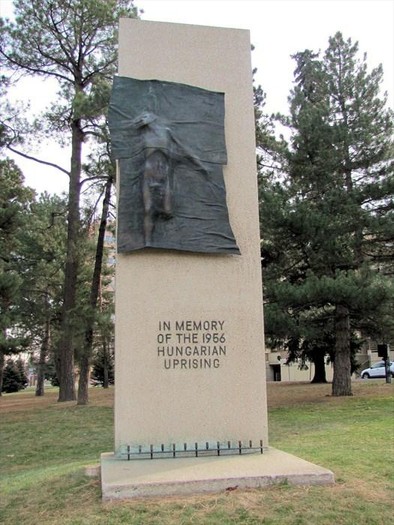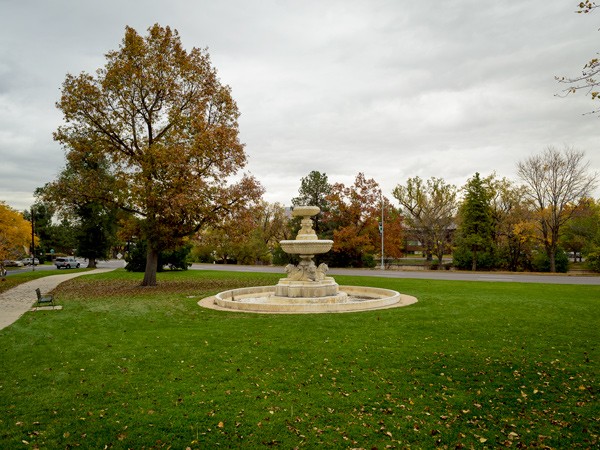Hungarian Freedom Park
Introduction
Text-to-speech Audio
Images
Hungarian Uprising Memorial

Lions Head Fountain

Coniferous trees on the southwest end

Trees on the northwest end of the park

Backstory and Context
Text-to-speech Audio
In the 19th century as Denver was growing, this land was home to an abundance of natural cottonwoods growing along the creek and known as the “Little Place of Cottonwoods" until it was converted into a city dump. This triangular plot situated along the Cherry Creek was converted to a park in 1912. The plot was connected to the Alamo Placita Park to the north. Known for many years as Arlington Park, in 1968 the city of Denver dedicated this park to the Hungarians who revolted against the Soviet Union.
Eventually Speer Boulevard separated this portion from the Alamo Placita Park, to the north. The design was meant to compliment the Italian Gardens in Alamo Placita Park. The gardens were meant to be seen from the hillside of the Arlington Park. The green of Arlington Park was meant to be a backdrop for the gardens. In 1925 the northwest end of the park was turfed. The southwest ha a smattering of deciduous and coniferous trees planted.
In 1968 the park was renamed Hungarian Freedom Park to commemorate the 1956 revolt of the Hungarians against Soviet oppression. In 1956, a speech by Soviet leader Nikita Khrushchev attacked the period of Joseph Stalin’s rule. People who opposed hard-line communist leaders in Hungary were encouraged by the remarks and for a time, rebel fighters controlled Hungary and called for reforms. Imre Nagy became leader with promise to form a multi-party system. The UN however did not accept their autonomy in fear of blowback from the Soviets. In 1958 the Soviet Union invaded Hungary and executed Nagy. Although the revolution was crushed, it demonstrated that many opposed Soviet rule and inspired future rebellions.
In the 1970s, a few works of public art were added to the park. In 1970, a monument by Zoltan Popovitz was erected near the trees on the southwest end. The memorial shows a figure emerging through a curtain in homage to the Hungarian Revolt. In 1976 a baroque lions head fountain was placed on the northwest edge near Emerson. It was designed in 1932 by sculptor Maurice Bardin.
Sources
- Hungarian Freedom Park/Arlington Park, History of Colorado. Accessed June 21st 2020. https://www.historycolorado.org/location/hungarian-freedom-park-arlington-park.
- Hungarian Revolution, Brittanica. Accessed June 21st 2020. https://www.britannica.com/event/Hungarian-Revolution-1956.
- Hungarian Freedom Park, The Cultural Landscape Foundation. Accessed June 21st 2020. https://tclf.org/landscapes/hungarian-freedom-park.
The Cultural Landscape Foundation
The Cultural Landscape Foundation
The Cultural Landscape Foundation
The Cultural Landscape Foundation
